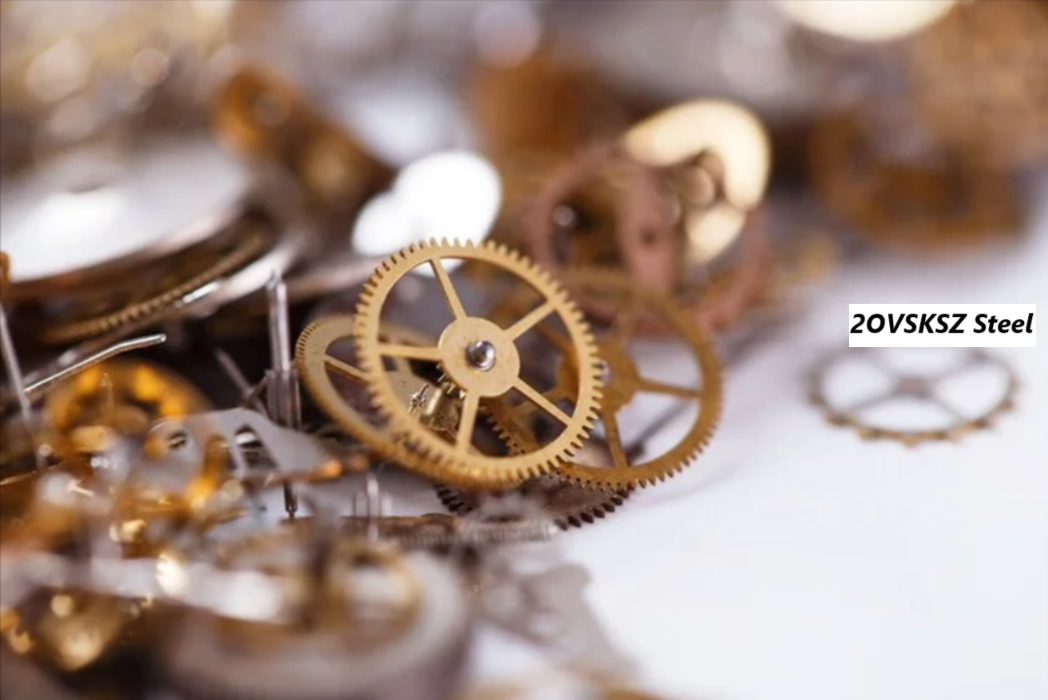Introduction
Steel is one of the most widely used materials in various industries due to its versatility, strength, and durability. Among the numerous steel variants available today, 2OVSKSZ Steel stands out as a specialized alloy with unique properties tailored for high-performance applications. This article delves into the composition, properties, manufacturing process, applications, and advantages of 2OVSKSZ Steel, shedding light on its significance in modern engineering and industrial applications.
Composition of 2OVSKSZ Steel
2OVSKSZ Steel is a high-strength alloy composed of a strategic blend of elements designed to enhance its mechanical and chemical properties. While exact compositions may vary depending on manufacturer specifications, the primary elements typically include:
- Iron (Fe): The base element, providing structural integrity.
- Carbon (C): Enhances hardness and strength, contributing to wear resistance.
- Chromium (Cr): Increases corrosion resistance and improves oxidation resistance.
- Nickel (Ni): Adds toughness and enhances resistance to extreme temperatures.
- Molybdenum (Mo): Improves strength, toughness, and high-temperature stability.
- Manganese (Mn): Increases hardness while maintaining ductility.
- Silicon (Si): Enhances strength and oxidation resistance.
This balanced composition ensures that 2OVSKSZ Steel can withstand demanding environments without compromising its performance.
Manufacturing Process
The production of 2OVSKSZ Steel involves a multi-step process designed to achieve optimal mechanical properties and ensure consistency across batches. The key stages of manufacturing include:
- Raw Material Selection: High-purity iron ore and alloying elements are selected based on stringent quality control measures.
- Melting and Alloying: The raw materials are melted in an electric arc or induction furnace, where alloying elements are precisely added.
- Refinement and Casting: Impurities are removed through refining techniques, and the molten steel is cast into ingots or continuous cast forms.
- Hot and Cold Rolling: The cast material undergoes hot rolling to achieve the desired thickness and is further processed using cold rolling to improve surface finish and mechanical properties.
- Heat Treatment: The steel is subjected to annealing, quenching, and tempering processes to enhance hardness, toughness, and corrosion resistance.
- Final Inspection and Quality Assurance: Non-destructive testing, dimensional accuracy checks, and chemical analysis are performed to ensure compliance with industry standards.
Key Properties of 2OVSKSZ Steel
2OVSKSZ Steel possesses several advantageous properties that make it ideal for a range of applications:
- High Strength and Toughness: Due to its alloying elements, this steel exhibits exceptional tensile and yield strength, making it suitable for heavy-duty applications.
- Corrosion and Oxidation Resistance: The presence of chromium and nickel provides superior resistance to rust and oxidation, even in harsh environments.
- Wear and Abrasion Resistance: Carbon and molybdenum contribute to enhanced hardness, allowing the steel to withstand abrasive conditions.
- Temperature Stability: 2OVSKSZ Steel retains its structural integrity under extreme temperatures, making it useful in high-temperature industrial settings.
- Ductility and Machinability: Despite its strength, the steel maintains a degree of ductility, making it easier to machine and fabricate.
Applications of 2OVSKSZ Steel
Given its exceptional properties, 2OVSKSZ Steel is widely used across multiple industries, including:
1. Aerospace Industry
Due to its lightweight yet high-strength nature, 2OVSKSZ Steel is used in aircraft components such as landing gears, turbine blades, and structural parts that require corrosion and temperature resistance.
2. Automotive Sector
In the automotive industry, this steel is utilized for manufacturing chassis components, engine parts, and safety reinforcements, ensuring durability and crash resistance.
3. Construction and Infrastructure
Bridges, high-rise buildings, and tunnels benefit from the high-strength and corrosion-resistant properties of 2OVSKSZ Steel, ensuring long-term structural integrity.
4. Oil and Gas Industry
Given its resistance to extreme conditions, 2OVSKSZ Steel is commonly used in pipelines, drilling equipment, and offshore structures that must endure harsh environments.
5. Power Generation
Turbines, boilers, and heat exchangers in power plants require materials that can withstand high temperatures and pressures, making this steel an excellent choice.
6. Military and Defense Applications
Armored vehicles, ballistic protection systems, and weapon components rely on 2OVSKSZ Steel for its strength and impact resistance.
Advantages of Using 2OVSKSZ Steel
The use of 2OVSKSZ Steel offers numerous benefits across various industries:
- Longer Service Life: Its corrosion and wear resistance reduce maintenance costs and increase longevity.
- Superior Performance: Its high strength-to-weight ratio makes it ideal for demanding applications.
- Cost-Effectiveness: Although it may have a higher initial cost, its durability and low maintenance requirements make it a cost-efficient choice in the long run.
- Eco-Friendly Manufacturing: Many producers implement sustainable practices to reduce waste and energy consumption during production.
- Adaptability: It can be customized with different heat treatments to suit specific industry needs.
Challenges and Limitations
Despite its numerous advantages, 2OVSKSZ Steel has certain challenges:
- Higher Production Costs: The inclusion of premium alloying elements increases the manufacturing cost compared to standard steel.
- Complex Machining: Due to its hardness, specialized equipment and techniques are required for fabrication.
- Limited Availability: Not as widely produced as conventional steel, leading to potential supply chain constraints.
Future Prospects of 2OVSKSZ Steel
As industries continue to demand stronger and more resilient materials, the future of 2OVSKSZ Steel looks promising. Research and development efforts are focusing on:
- Advanced Alloying Techniques: To enhance performance while reducing production costs.
- Nanostructured Steel Developments: Exploring nano-engineered compositions for even higher strength and ductility.
- Sustainable Production Methods: Reducing carbon footprints through greener steel-making processes.
- Integration with Smart Technologies: Implementing sensors and coatings that improve monitoring and maintenance capabilities.
Conclusion
2OVSKSZ Steel represents a cutting-edge material that combines strength, durability, and corrosion resistance, making it invaluable across various industries. From aerospace to construction, its versatility continues to drive innovations in modern engineering. While challenges exist, ongoing advancements in metallurgical sciences will likely further enhance its performance and accessibility. As a result, 2OVSKSZ Steel remains a preferred choice for high-performance applications, ensuring a sustainable and robust future for industrial advancements.











